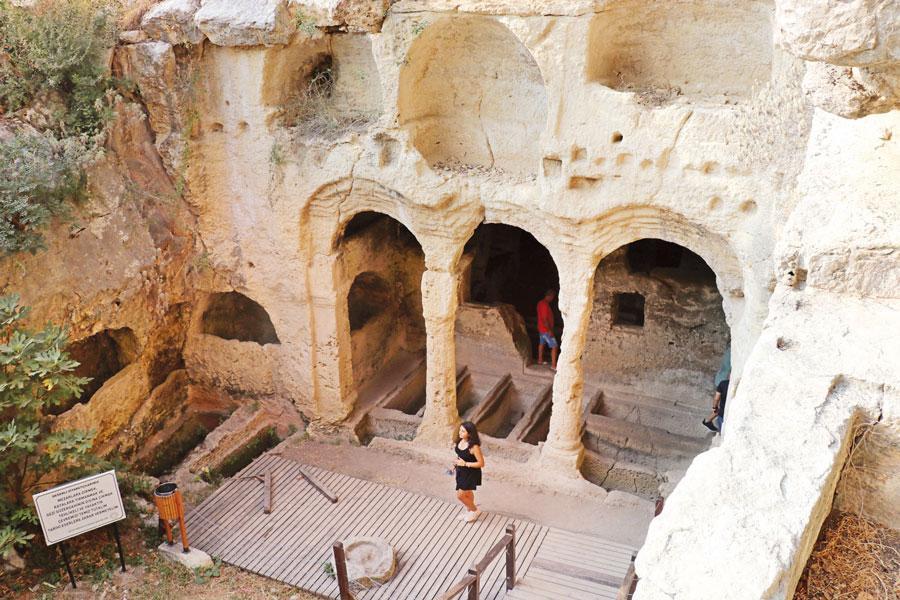
A tunnel built by prisoners in the first century in the southeastern province of Hatay’s Samandağ district draws attention both for its story and impressive structure.
The Vespasianus Titus Tunnel built during the Roman period is located within the boundaries of the ancient city of Seleuceia Pieria.
Since the city was under the threat of the floods descended from the mountains and flowed through the city and the harbor was silted up and became inoperative, the Roman emperor, Vespasianus ordered to build a tunnel by digging the mountain in order to divert the floodwaters threatening the harbor.

The diversion system was built with the principle of closing the front of the stream bed with a deflection cover and transferring stream waters to the sea through an artificial canal and tunnel.
Construction began in the first century A.D. during the reign of Roman Emperor Vespasianus (69-79 A.D.), continued under his son Titus (79-81 A.D.) and his successors and was completed in the second century A.D. during the reign of another Roman emperor, Antonius Pius.
A rock-carved inscription at the entrance of the first tunnel section bears the names Vespasianus and Titus, another bears an inscription of Antonius in the downstream channel.
The diversion system, displaying a broken alignment, consists of a dam to divert the river flow, a short approach channel, the first tunnel section, a short intermediary channel, the second tunnel section and a long discharge.
Known as “the world’s biggest tunnel built by hand,” the 1,380-meter-long, seven-meter-high and six-meter-wide tunnel is preferred by those who want to take a journey to history among various tree species.
Speaking to state-run Anadolu Agency, the Provincial Culture and Tourism Director Hüsnü Işıkgör said they had been carrying out works to protect the Vespasianus-Titus Tunnel, which was included on the UNESCO World Heritage Tentative List in 2014 and provided an easier visit.
As part of the works, walking routes, view terraces and booths to sell local products were made in the area and they also prepared a project to build a welcome center and social centers inside the tunnel.
Işıkgör said they delivered the project to the Adana Cultural and Natural Heritage Preservation Board.
“Vespasianus-Titus is the longest hand-made tunnel in the world. Next to the tunnel is Beşikli Inn, which is home to many graves. We know that popes and ecclesiastics were buried there. The tunnel is on the tentative list of UNESCO World Heritage Sites but we want it to be on the main list. We have started the works for it. We will work on landscaping for the tunnel and start working on the welcome center as soon as possible. We will complete it after it is evaluated by the board. We want to make the tunnel, which is one of the most important attractions in Hatay, more impressive,” he said.